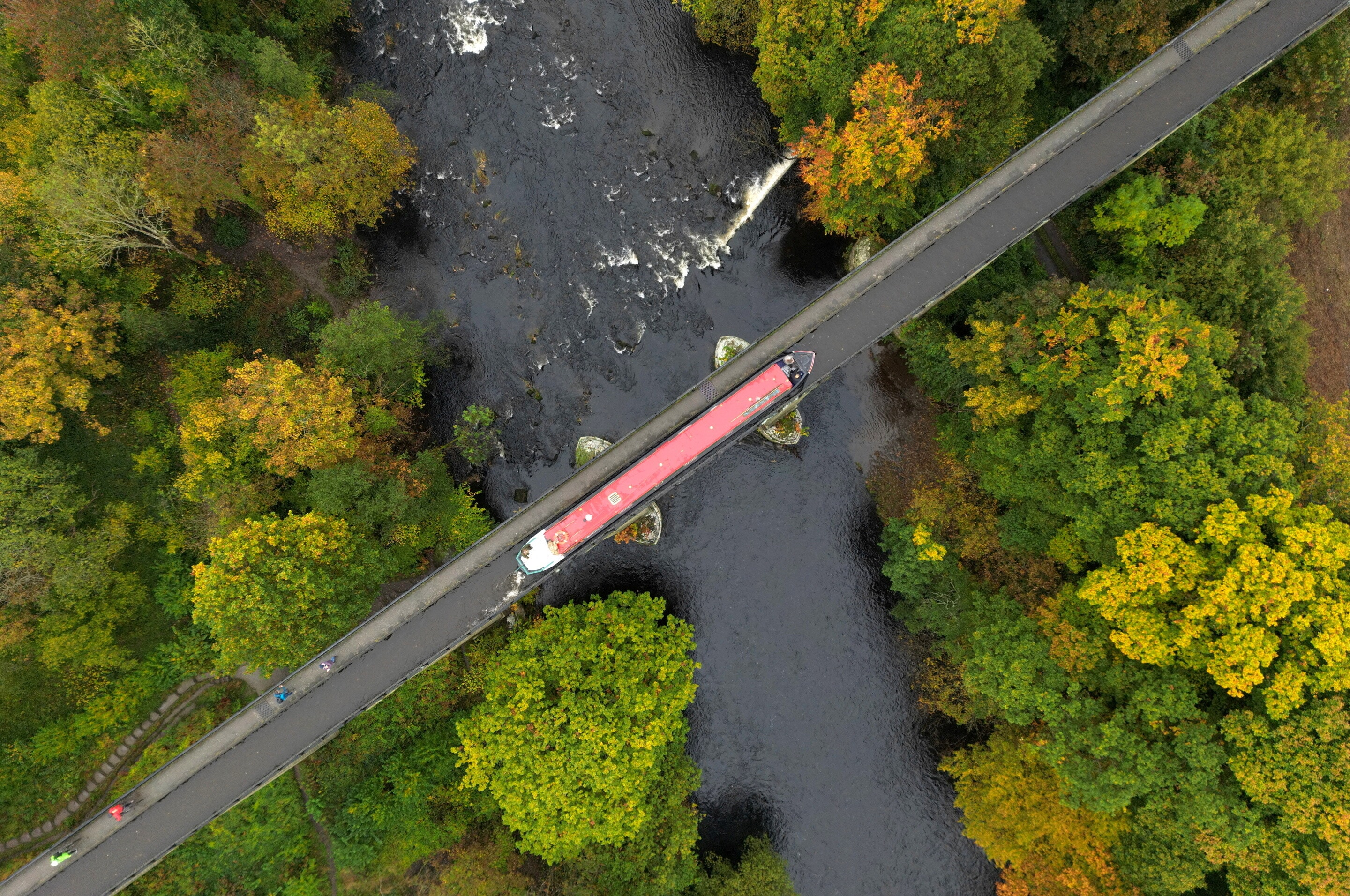How to prevent shortages of critical supplies during a pandemic
Shortages meant the price of surgical masks soared sixfold during the pandemic.
Image: Unsplash/Mika Baumeister
Dong Li
Scientist, Advanced Remanufacturing and Technology Centre (ARTC), Agency for Science, Technology and Research (A*STAR), SingaporeChuanwen Dong
Assistant Professor, Information & Operations Management department of ESCP Business School (Berlin campus)Stay up to date:
Logistics
Listen to the article
- The COVID-19 pandemic prompted a surge in seemingly 'irrational' behaviour such as panic buying and stockpiling items deemed essential.
- It showed the limits of the free market and a new theoretical model offers insights into how to design effective supply chain regulations.
- Properly-designed relative price regulation can mitigate shortages and boost profits within the supply chain, benefiting both companies and consumers.
In the early days of 2020, back when there was a cascade of quarantine measures announced around the world to combat the outbreak of COVID-19, countless consumers adopted seemingly irrational behaviour, going into panic buying mode and stockpiling what they considered to be essential during a lockdown.
Scenes of toilet paper and noodles flying off the shelves were so laughable as to have become the subject of many an internet meme. But other shortages – those of truly critical life-saving goods – were no laughing matter.
Indeed, the lives of health workers worldwide were endangered when surgical face masks, hand sanitizers and even respirators became either nigh-impossible to find, or their price went through the roof.
In March 2020, the World Health Organization (WHO) noted that the price of surgical masks had increased sixfold, the price of N95 respirators had trebled and the price of surgical gowns had doubled since the start of the pandemic.
While on the demand side, hoarding on the part of panicked consumers is irrational behaviour that weakens the market, the emergency context also caused difficulties for the supply side, with firms struggling to fulfil orders because of inflexible production lines or suspended logistics flows.
Not that sellers did not also indulge in price gouging, i.e. taking advantage of the situation by raising prices to generate higher profits.
How governments can step in to prevent shortages
Yet it appears essential to secure the proper distribution of life-saving goods, such as medical and protective products, especially during a pandemic. How so?
The most ardent defenders of the free market believe that even in a time of crisis, supply and demand can solve all the basic problems if they are allowed to work without constraints.
For example, only 7% of the eminent economists on Chicago Booth’s Initiative on Global Markets panel said that Connecticut should outlaw price gouging during “severe weather emergencies” in 2012.
But the pandemic has shown us that such market distortion calls for government intervention. In a ground-breaking paper Government regulations to mitigate the shortage of life-saving goods in the face of a pandemic, we develop a new model, inspired by game theory, to support governments in designing supply-chain regulations to mitigate the shortage of critical life-saving goods.
Planning such rules is a highly-challenging task, since policymakers must consider supply chains disrupted by both the supply and the demand side during a global pandemic.
To evaluate what kind of regulation is most effective, we created a model to examine the performances of three types of interventions, which were applied in several countries during the COVID-19 pandemic:
- Price regulation (limitations on retail price, as has been observed in Italy for instance)
- Purchase regulation (limitations on purchase quantities, as reported in the US)
- Mixed regulation (a combination of both options, as applied in Korea and Taiwan)
Considering the severe market distortion and devastating death toll caused by the COVID-19 pandemic, the effectiveness of such regulation should be assessed against the single objective of mitigating shortages, and not according to a more traditional cost-benefit analysis, though our focus is on regulations that do not require subsidies or other government expenditure.
The winning formula: mixed regulation to prevent shortages
We were able to draw clear conclusions from our model. Traditional price regulation, which sets an absolute ceiling for the retail price of a given good, potentially enforces the supplier to produce more in order to keep up with the profit (the “production-boosting effect”) and thus mitigates shortages. But a low price also induces the risk that consumers will stockpile more because goods are cheaper (the “hoarding-exacerbation effect”).
We thus propose a relative price regulation that caps the ratio of the wholesale price in relation to the retail price. Our model shows that it is indeed more effective at preventing shortages.
In addition, relative pricing is easier to implement in an uncertain context, when unit production costs may fluctuate dramatically. It is therefore inconvenient for policymakers to keep tracking the changing market and adopt absolute price regulation accordingly.
Examining the other side of the equation, i.e. demand, it is reasonable to expect that demand rationing (for example, limiting purchases of face masks to one per person) could curb panic buying and ensure a fairer distribution of goods. But our findings show that it is often not the case.
The main reason is that rationing demand significantly reduces total consumption, which disincentivizes production. In such a case, suppliers may very well lower their production outputs and effectively deteriorates shortage.
Nevertheless, purchase regulation can reduce the shortage rate when capacity is seriously insufficient and the production cost is low, which might happen at the beginning of a pandemic.
In contrast, mixed regulation – a combination of relative price and purchase regulation – simultaneously rations demand and caps prices ratio, thereby associating the merits of both types of policies.
It can boost production while not exacerbating consumer hoarding, and is especially effective in mitigating the shortage rate when production capacity is low, which is often the case at the beginning or early stage of a pandemic; when the production capacity is largely ramped up, demand rationing should be lifted and a solely relative price regulation can further reduce the shortage rate.
Interestingly, in a supply chain setting, an appropriately-designed relative price regulation can reduce the shortage rate and increase firms' profits simultaneously, which is a win-win situation for firms and consumers. The main reason is that the regulation affects the game between the supply chain firms and mitigates the so-called double-marginalization effect.
Broad applications for public emergency management
This study provides guidance for policymakers in the face of COVID-19, and in the case of other infectious diseases, because the pandemic is not a new occurrence in our history – and it will most likely happen again.
How is the Forum helping to navigate global value chain disruption?
In addition, our paper is particularly innovative in that it is at the intersection of the broad field of infectious disease management from an operational management perspective, and of the field of government intervention in a context of emergency.
Overall, we have shown that properly-designed relative price regulation can mitigate shortages and also increase profits within the supply chain – which is a win-win situation for both companies and consumers.
Don't miss any update on this topic
Create a free account and access your personalized content collection with our latest publications and analyses.
License and Republishing
World Economic Forum articles may be republished in accordance with the Creative Commons Attribution-NonCommercial-NoDerivatives 4.0 International Public License, and in accordance with our Terms of Use.
The views expressed in this article are those of the author alone and not the World Economic Forum.
Related topics:
Forum Stories newsletter
Bringing you weekly curated insights and analysis on the global issues that matter.
More on BusinessSee all
Jan Oliver Schwarz and Katharina Kleine
August 12, 2025
Elizabeth Henderson and Daniel Murphy
August 8, 2025
António Costa
August 6, 2025
Mauro Gianni and Isidora Kosta
August 4, 2025
Charlotte Degot
August 4, 2025
Li Dongsheng
July 31, 2025






